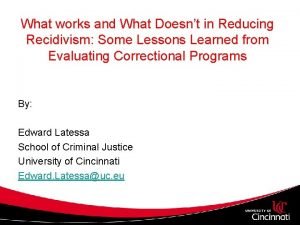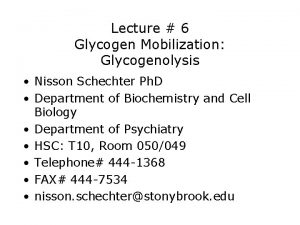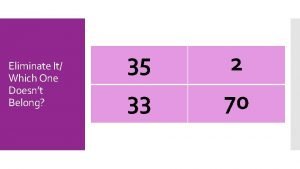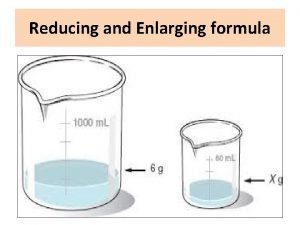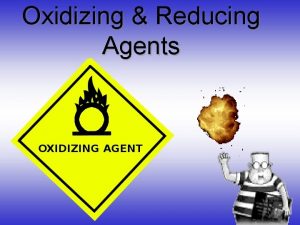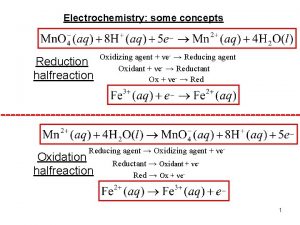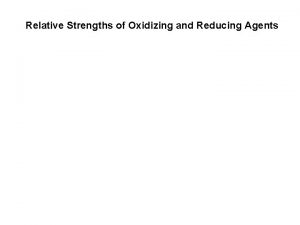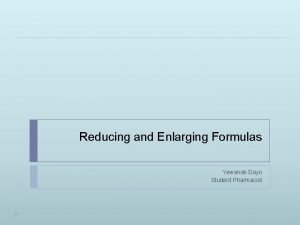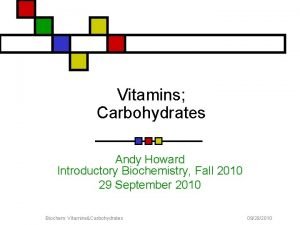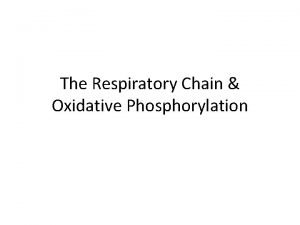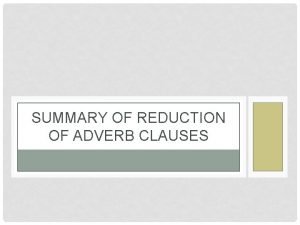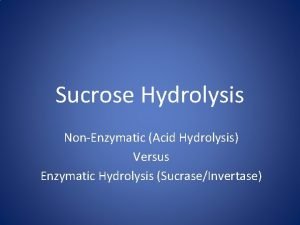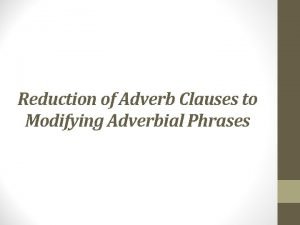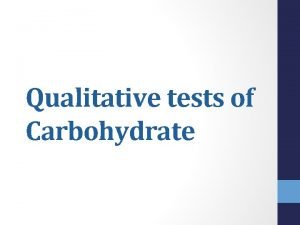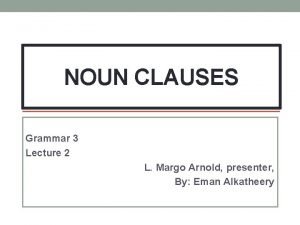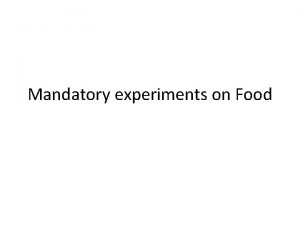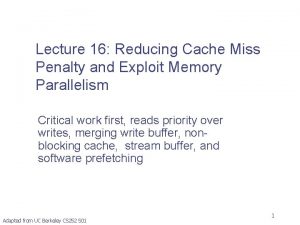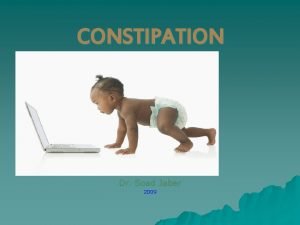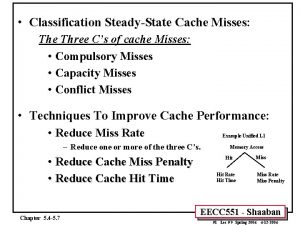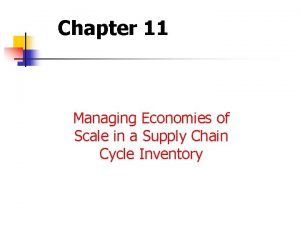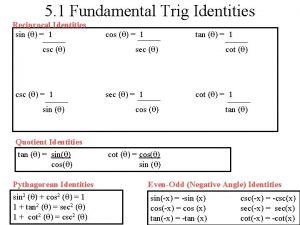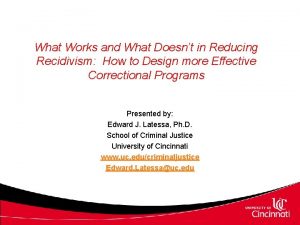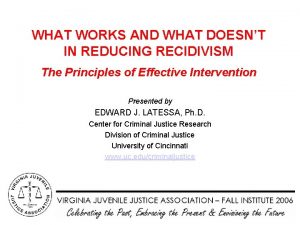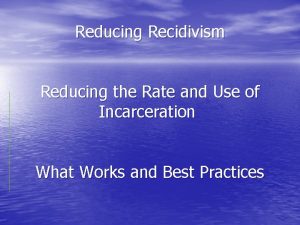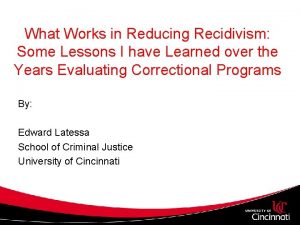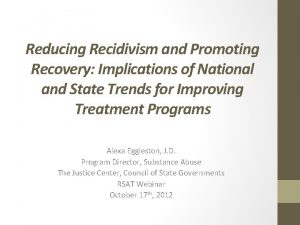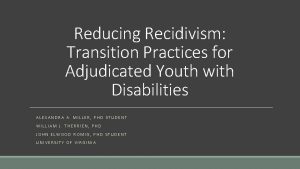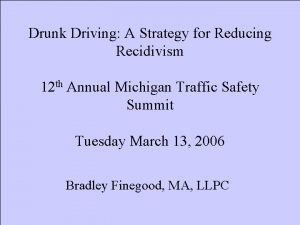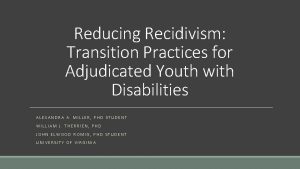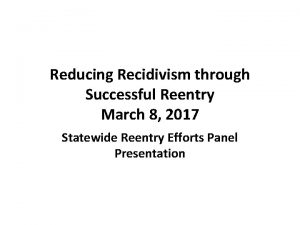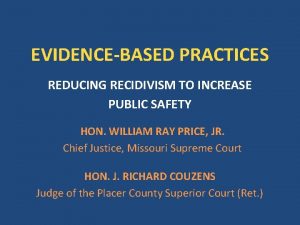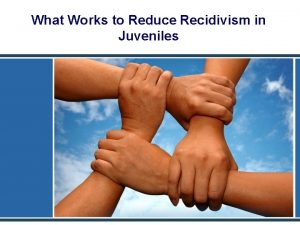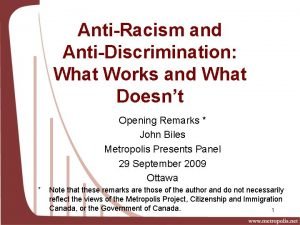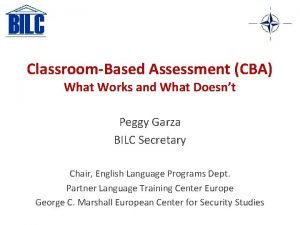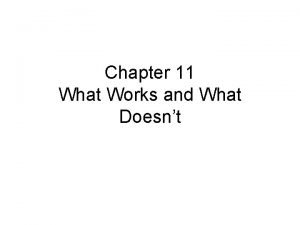What Works and What Doesnt in Reducing Recidivism













































































- Slides: 77

What Works and What Doesn’t in Reducing Recidivism Presented by: Edward J. Latessa, Ph. D. School of Criminal Justice University of Cincinnati www. uc. edu/criminaljustice Edward. Latessa@uc. edu

Evidence Based – What does it mean? There are different forms of evidence: – The lowest form is anecdotal evidence; stories, opinions, testimonials, case studies, etc - but it often makes us feel good – The highest form is empirical evidence – research, data, results from controlled studies, etc. - but sometimes it doesn’t make us feel good

Evidence Based Practice is: 1. Easier to think of as Evidence Based Decision Making 2. Involves several steps and encourages the use of validated tools and treatments. 3. Not just about the tools you have but also how you use them

Evidence-Based Decision Making Requires 1. Assessment information - Valid and reliable offenders assessment process - Assessment of programs and practices 2. Relevant research - Consult research - Design and fund programs that are based on empirical evidence - Use existing resources (i. e. , Crimesolutions. gov) 3. Available programming - To reduce risk - Improve existing programs - Develop new programs

Evidence-Based Decision Making Requires: 4. Evaluation - Offenders - Quality assurance processes - Performance measures - Data 5. Professionalism and knowledge from staff - Understand EBP - Trained, coached, and skilled - Commitment

What does the Research tell us? There is often a Misapplication of Research: “XXX Study Says” - the problem is if you believe every study we wouldn’t eat anything (but we would drink a lot of red wine!) • Looking at one study can be a mistake • Need to examine a body of research • So, what does the body of knowledge about correctional interventions tell us?

A Large Body of Research Has Indicated…. …. that correctional services and interventions can be effective in reducing recidivism for offenders, however, not all programs are equally effective • The most effective programs are based on some principles of effective interventions • Risk (Who) • Need (What) • Treatment aka Responsivity (How) • Program Integrity (How Well)

Let’s Start with the Risk Principle Risk refers to risk of reoffending and not the seriousness of the offense.

Risk Principle As a general rule treatment effects are stronger if we target higher risk offenders, and harm can be done to low risk offenders

Percent with New Arrest Risk Level by Recidivism for the Community Supervision Sample Low 0 -14 Medium = 15 -23 High = 24 -33 Very High 34+

There are Three Elements to the Risk Principle 1. Target those offenders with higher probability of recidivism 2. Provide most intensive treatment to higher risk offenders 3. Intensive treatment for lower risk offender can increase recidivism

#1: Targeting Higher Risk Offenders • It is important to understand that even with EBP there will be failures. • Even if you reduce recidivism rates you will still have high percentage of failures

• • Example of Targeting Higher Risk Offenders If you have 100 High risk offenders about 60% will fail If you put them in well designed EBP for sufficient duration you may reduce failure rate to 40% If you have 100 low risk offenders about 10% will fail If you put them in same program failure rate will be 20%

Targeting Higher Risk Offenders continued: • In the end, who had the lower recidivism rate? • Mistake we make is comparing high risk to low risk rather than look for treatment effects

#2: Provide Most Intensive Interventions to Higher Risk Offenders

The question is: What does more “intensive” treatment mean in practice? • Most studies show that the longer someone is in treatment the great the effects, however: • Effects tend to diminish if treatment goes too long

Results from a 2010 Study (Latessa, Sperber, and Makarios) of 689 offenders • • 100 -bed secure residential facility for adult male offenders Cognitive-behavioral treatment modality Average 33 60% single, never married 43% less than high school education 80% moderate risk or higher 88% have probability of substance abuse per SASSI

2010 Dosage Study of 689 Offenders Sperber, , Latessa & Makarios (2013). Examining the Interaction between Level of Risk and Dosage of Treatment. Criminal Justice and Behavior, 40(3).

Results from 2014 Study • We expanded sample • Hours examined by increments of 50 • Looked at low/moderate, and high

2014 Dosage Study involving 903 offenders Makarios, Sperber, & Latessa (2014). Treatment Dosage and the Risk Principle: A Refinement and Extension. Journal of Offender Rehabilitation. 53: 334 -350.

Provide Most Intensive Interventions to Higher Risk Offenders • Higher risk offenders will require much higher dosage of treatment – Rule of thumb: 100 -150 hours for moderate risk – 200+ hours for high risk – 100 hours for high risk will have little effect – Does not include work/school and other activities that are not directly addressing criminogenic risk factors

#3: Intensive Treatment for Low Risk Offenders will Often Increase Failure Rates • Low risk offenders will learn anti social behavior from higher risk • Disrupts pro-social networks • Increased reporting/surveillance leads to more violations/revocations

Study of Intensive Rehabilitation Supervision in Canada Recidivism Rates Bonta, J et al. , 2000. A Quasi-Experimental Evaluation of an Intensive Rehabilitation Supervision Program. , Vol. 27 No 3: 312 -329. Criminal Justice and Behavior

STUDY OF COMMUNITY CORRECTIONAL PROGRAMS IN OHIO • Largest study of community based correctional treatment facilities ever done up to that time. • Total of 13, 221 offenders – 37 Halfway Houses and 15 Community Based Correctional Facilities were included in the study. • Two-year follow-up conducted on all offenders • Recidivism measures included new arrests & incarceration in a state penal institution Lowenkamp, C. T. & Latessa, E. J. (2002). Evaluation of Ohio’s Community Based Correctional Facilities and Halfway House Programs. Cincinnati, Ohio: Division of Criminal Justice, University of Cincinnati.

Reduced Recidivism Increased Recidivism


To understand the Need Principle we need to review the body of knowledge related to risk factors What are the risk factors correlated with criminal conduct?

Major Set of Risk/Need Factors 1. Antisocial/procriminal attitudes, values, beliefs & cognitive emotional states 2. Procriminal associates & isolation from anticriminal others 3. Temperamental and anti social personality patterns conducive to criminal activity including: Ø Weak socialization Ø Impulsivity Ø Adventurous Ø Restless/aggressive Ø Egocentrism Ø A taste for risk Ø Weak problem-solving/self-regulation & coping skills 4. A history of antisocial behavior

Reducing Negative Peer Associations ü Restrict associates ü Set and enforce curfews ü Ban hangouts, etc. ü Teach offender to recognize & avoid negative influences (people, places, things) ü Practice new skills (like being assertive instead of passive) ü Teach how to maintain relationships w/o getting into trouble ü Identify or develop positive associations: mentors, family, friends, teachers, employer, etc. ü Train family and friends to assist offender ü Set goal of one new friend (positive association) per month ü Develop sober/prosocial leisure activities

Major Set of Risk/Need Factors 5. Familial factors that include criminality & a variety of psychological problems in the family of origin including low levels of affection, caring, & cohesiveness, poor supervision and discipline, & outright neglect and abuse. 6. Low levels of personal, educational, vocational, or financial achievement 7. Low levels of involvement in prosocial leisure activities 8. Substance Abuse

Study by Bucklen and Zajac of parole violators in Pennsylvania found a number of criminogenic factors related to failure* Bucklen, B. , & Zajac, G. (2009). But some of them don’t come back (to prison!): Resource deprivation and thinking errors as determinants of parole success and failure. The Prison Journal. 89: 239– 264.

Pennsylvania Parole Study Social Network and Living Arrangements Violators Were: • More likely to hang around with individuals with criminal backgrounds • Less likely to live with a spouse • Less likely to be in a stable supportive relationship • Less likely to identify someone in their life who served in a mentoring capacity

Pennsylvania Parole Study Employment & Financial Situation Violators were: • • Less likely to have job stability Less likely to be satisfied with employment Less likely to take low end jobs and work up More likely to have negative attitudes toward employment & unrealistic job expectations • Less likely to have a bank account • More likely to report that they were “barely making it” (yet success group reported over double median debt)

Pennsylvania Parole Study Alcohol or Drug Use Violators were: • More likely to report use of alcohol or drugs while on parole (but no difference in prior assessment of dependency problem) • Poor management of stress was a primary contributing factor to relapse

Pennsylvania Parole Study Life on Parole - Violators were: • • • Had poor problem solving or coping skills Did not anticipate long term consequences of behavior Failed to utilize resources to help themselves Acted impulsively to immediate situations Felt they were not in control More likely to maintain anti-social attitudes Viewed violations as an acceptable option to situation Maintained general lack of empathy Shifted blame or denied responsibility Had unrealistic expectations about what life would be like outside of prison

Pennsylvania Parole Violator Study: • Successes and failures did not differ in difficulty in finding a place to live after release • Successes & failures equally likely to report eventually obtaining a job

Need Principle By assessing and targeting criminogenic needs for change, agencies can reduce the probability of recidivism Criminogenic Non-Criminogenic • • • Anti social attitudes Anti social friends Substance abuse Lack of empathy Impulsive behavior Anxiety Low self esteem Creative abilities Medical needs Physical conditioning

Definitely NOT Criminogenic Needs

Some so called “theories” we have come across • “Offenders lack creativity theory” • “Offenders need to get back to nature theory” • “Offenders need to change their diet theory” • “Treat them as babies & dress them in diapers theory” • “We just want them to be happy theory” • “Male offenders need to get in touch with their feminine side theory”

Targeting Criminogenic Need: Results from Meta. Analyses Reduction in Recidivism Increase in Recidivism Source: Gendreau, P. , French, S. A. , and A. Taylor (2002). What Works (What Doesn’t Work) Revised 2002. Invited Submission to the International Community Corrections Association Monograph Series Project

Criminal Thinking and Mental Illness* Morgan, Fisher, Duan, Mandracchia, and Murray (2010) studied 414 adult offenders with mental illness (265 males, 149 females) and found: • 66% had belief systems supportive of criminal life style (based on Psychological Inventory of Criminal Thinking Scale (PICTS) • When compare to other offender samples, male offenders with MI scored similar or higher than non-mentally disordered offenders. • On Criminal Sentiments Scale-Revised, 85% of men and 72% of women with MI had antisocial attitudes, values and beliefs – which was higher than incarcerated sample without MI. See: Prevalence of Criminal Thinking among State Prison Inmates with Serious Mental Illness. Law and Human Behavior 34: 324 -336, and Center for Behavioral Health Services Criminal Justice Research Policy Brief, April 2010. Rutgers University.

Conclusion • Criminal Thinking styles differentiate people who commit crimes from those who do not independent of mental illness • Incarcerated persons with mental illness are often mentally ill and criminal • Needs to be treated as co-occurring problems

Assessment is the engine that drives effective correctional programs • Need to meet the risk and need principle • Reduces bias • Aids decision making • Allows you to target dynamic risk factors and measure change • Best risk assessment method is the actuarial (statistical) approach

To Understand Assessment it is Important to Understand Types of Risk Factors

Dynamic and Static Factors • Static Factors are those factors that are related to risk and do not change. Some examples might be number of prior offenses, whether an offender has ever had a drug/alcohol problem. • Dynamic factors relate to risk and can change. Some examples are whether an offender is currently unemployed or currently has a drug/alcohol problem.

According to the American Heart Association, there a number of risk factors that increase your chances of a first heart attack ü Family history of heart attacks ü Gender (males) ü Age (over 50) ü Inactive lifestyle ü Over weight ü High blood pressure ü Smoking ü High Cholesterol level

There are two types of dynamic risk factors • Acute – Can change quickly • Stable – Take longer to change

Some Examples of Offender Risk Assessment Tools • • Level of Service Inventory (LSI) PCL COMPAS Ohio Risk Assessment System

ORAS-CST Intake Assessment

Treatment Principle (general responsivity) The most effective interventions are behavioral: • Focus on current factors that influence behavior • Action oriented • Staff follow “core correctional practices”

Results from Meta Analysis: Behavioral vs. Non. Behavioral Reduced Recidivism Andrews, D. A. 1994. An Overview of Treatment Effectiveness. Research and Clinical Principles, Department of Psychology, Carleton University. The N refers to the number of studies.

Most Effective Behavioral Models • Structured social learning where new skills and behaviors are modeled • Cognitive behavioral approaches that target criminogenic risk factors

Social Learning Refers to several processes through which individuals acquire attitudes, behavior, or knowledge from the persons around them. Both modeling and instrumental conditioning appear to play a role in such learning

The Four Principles of Cognitive Intervention 1. Thinking affects behavior 2. Antisocial, distorted, unproductive irrational thinking can lead to antisocial and unproductive behavior 3. Thinking can be influenced 4. We can change how we feel and behave by changing what we think

Recent Meta-Analysis of Cognitive Behavioral Treatment for Offenders by Landenberger & Lipsey (2005)* • Reviewed 58 studies: 19 random samples 23 matched samples 16 convenience samples • Found that on average CBT reduced recidivism by 25%, but the most effective configurations found more than 50% reductions

Significant Findings (effects were stronger if): • • Sessions per week (2 or more) - RISK Implementation monitored - FIDELITY Staff trained on CBT - FIDELITY Higher proportion of treatment completers RESPONSIVITY • Higher risk offenders - RISK • Higher if CBT is combined with other services NEED

Some Examples of Cognitive Behavioral Correctional Curriculums • Aggression Replacement Training (ART) • Criminal Conduct and Substance Abuse Treatment • Thinking for a Change (nonproprietary) • UC's Cognitive Behavioral Interventions for Offenders Seeking Employment (nonproprietary – pilot underway) • Changing Offender Lives (Specifically for MDOs – Nonproprietary) • UC’s Cognitive Behavioral Interventions for Substance Abuse (non-proprietary) • Moving On (Female Offenders) • UC’s Cognitive Behavioral Treatment for Sex Offenders (non-proprietary) • UC's Cognitive Behavioral Interventions for Offenders - A comprehensive curriculum (nonproprietary. Also adaptable for MDOs.

Core Correctional Practices 1. 2. 3. 4. 5. 6. 7. 8. Effective Reinforcement Effective Disapproval Effective Use of Authority Quality Interpersonal Relationships Cognitive Restructuring Anti-criminal Modeling Structured Learning/Skill Building Problem Solving Techniques

Applying Core Correctional Practices and Cognitive Behavioral Interventions in Supervision

Traditional Officer-Offender Interactions are often not Effective because: q They are too brief to have an impact q Conversations focus almost exclusively on monitoring compliance conditions (and therefore emphasize external controls on behavior rather than developing an internal rationale for pro-social behavior) q Relationship is often more confrontational and authoritarian in nature than helpful q What is targeted is not always based on assessment q More areas discussed=less effective 61

We are currently training on a new model of PO and Case Manger interaction Effective Practices in Correctional Supervision (EPICS) 62

Structure of EPICS Meeting SESSION OVERVIEW • Each session should be structured in the following way: 1. Check-In 2. Review 3. Intervention 4. Homework 63

Rationale for EPICS Preliminary Data from Canada: q. Trained officers had 12% higher retention rates in comparison with untrained officers at six months. q. Also found reductions in recidivism 64

Two year Recidivism Results from Canadian Study Bont, et al, (2010) The Strategic Training Initiative in Community Suopervision: Risk-Need-Responsivity in the Real World. Public Safety Canada.

Findings from Federal Probation Sample Robinson, Vanbenschoten, Alexander, and Lowenkamp, Federal Probation, Sept. 2011.

Recidivism Results from Ohio Study looking at Fidelity and High Risk Offenders Latessa, E. , Smith, P. , Schweitzer, m. , and Labrecque, R. (2013). Evaluation of the Effective Practices in Community Supervision Model (EPICS) in Ohio. School of Criminal Justice, University of Cincinnati.

Meta Analysis: POs and Case Managers Trained in Core Correctional Practices (i. e. EPICS): Effects on Recidivism Chadwick, De. Wolf and Serin (2015). Effectively Training Community Supervision Officers, Criminal Justice and Behavior, 20: 1 -13

We are Currently Piloting a New Version: Effective Practices for Community Support (EPICS for Influencers) • Designed to identify those people in the offender’s life that want to help them stay out of trouble and train them on some of the core skills taught in EPICS. • Includes training of coaches to provide on-going support

Why EPICS for Influencers? • Build a pro-social network with some actual skills to help offenders avoid risky situations • Increase “dosage” • Research shows that relapse prevention programs that trained significant others and family members in cognitive-behavioral approaches were three times as effective as programs that did not.

EPICS for Influencers is Designed for: • • • Mentors Coaches Family Members Friends Faith Based Organizations Reentry Coalitions Law Enforcement School Officials Significant others

EPICS-I • Pilot Sites include: – LA County Jail Reentry Program – Hamilton County (Cincinnati) Reentry Coalition – Portsmouth, OH Juvenile Truancy and Mentoring Program

These approaches help us…. • Structure our interventions • Teach and model new skills • Allow offender to practice with graduated difficulty • Reinforce the behavior

What Doesn’t Work with Offenders?

Lakota tribal wisdom says that when you discover you are riding a dead horse, the best strategy is to dismount. However, in corrections, and in other affairs, we often try other strategies, including the following: • • • Buy a stronger whip. Change riders Say things like “This is the way we always have ridden this horse. ” Appoint a committee to study the horse. Arrange to visit other sites to see how they ride dead horses. Create a training session to increase our riding ability. Harness several dead horses together for increased speed. Declare that “No horse is too dead to beat. ” Provide additional funding to increase the horse’s performance. Declare the horse is “better, faster, and cheaper” dead. Study alternative uses for dead horses. Promote the dead horse to a supervisory position.

Ineffective Approaches with Offenders • Programs that cannot maintain fidelity • Programs that target non-criminogenic needs • Drug prevention classes focused on fear and other emotional appeals • Shaming offenders • Drug education programs • Non-directive, client centered approaches • Bibliotherapy • Talking cures • Self-Help programs • Vague unstructured rehabilitation programs • “Punishing smarter” (boot camps, scared straight, etc. )

Fidelity Principle Making sure the program is delivered as designed and with integrity: • Ensure staff are modeling appropriate behavior, are qualified, well trained, well supervision, etc. • Make sure barriers are addressed but target criminogenic needs • Make sure appropriate dosage of treatment is provided • Monitor delivery of programs & activities, etc. • Reassess offenders in meeting target behaviors

Some Lessons Learned from the Research Ø Who you put in a program is important – pay attention to risk Ø What you target is important – pay attention to criminogenic needs Ø How you target offender for change is important – use behavioral approaches Ø Program Integrity makes a difference - Service delivery, training/supervision of staff, support for program, QA, evaluation, etc.
 What works and doesn't in reducing recidivism download
What works and doesn't in reducing recidivism download Recidive
Recidive Fates of glucose 6 phosphate
Fates of glucose 6 phosphate Difference between reducing and non reducing sugars
Difference between reducing and non reducing sugars Glucose seliwanoff test
Glucose seliwanoff test What goes up and doesnt come down
What goes up and doesnt come down Reducing vs non reducing sugars
Reducing vs non reducing sugars Why does holden fight stradlater
Why does holden fight stradlater Doesnt really matter
Doesnt really matter What does dna have that rna doesnt
What does dna have that rna doesnt Doesnt affect me
Doesnt affect me Which one doesn't belong
Which one doesn't belong King henry doesn't like chocolate milk
King henry doesn't like chocolate milk Doesnt tense
Doesnt tense It doesnt take
It doesnt take Nrswa revision
Nrswa revision Identifying oxidizing and reducing agents
Identifying oxidizing and reducing agents Pharmaceutical calculation reducing and enlarging formulas
Pharmaceutical calculation reducing and enlarging formulas Different applications of reducing and enlarging formulas
Different applications of reducing and enlarging formulas How to find oxidizing and reducing agents
How to find oxidizing and reducing agents Standard reduction potential
Standard reduction potential Bulk gaining goods
Bulk gaining goods Differentiate between oxidizing and reducing agents
Differentiate between oxidizing and reducing agents Reducing and enlarging formulas pharmacy examples
Reducing and enlarging formulas pharmacy examples Relative strength of oxidizing and reducing agents
Relative strength of oxidizing and reducing agents Reducing and enlarging formulas pdf
Reducing and enlarging formulas pdf Buffel infeed substation
Buffel infeed substation How to cite romeo and juliet mla
How to cite romeo and juliet mla Ministry of transport, communications and works
Ministry of transport, communications and works 1984 2+2 quote
1984 2+2 quote Ernest hemingway prose
Ernest hemingway prose William blake life and works
William blake life and works Used in both the folk and classical court music of korea
Used in both the folk and classical court music of korea City of houston idm
City of houston idm Public works north west
Public works north west Ministry of public works and transport cambodia
Ministry of public works and transport cambodia John milton born
John milton born When something works
When something works What works student retention and success
What works student retention and success Ministry of regional development and public works
Ministry of regional development and public works Ministry of regional development and public works
Ministry of regional development and public works Hyperbole in a modest proposal
Hyperbole in a modest proposal Least cost theory example
Least cost theory example Reducing equivalents
Reducing equivalents What is the reducing end of a sugar
What is the reducing end of a sugar Reducing equivalents
Reducing equivalents Reduce adverb clause
Reduce adverb clause Non reducing sugar examples
Non reducing sugar examples Cos2x identity
Cos2x identity Modifying phrase
Modifying phrase Reducing rational expressions to lowest terms
Reducing rational expressions to lowest terms Importance of carbohydrates
Importance of carbohydrates Strongest reducing agent
Strongest reducing agent Reduction half reactions table
Reduction half reactions table Noun clause reduction
Noun clause reduction Is ethanol bulk gaining or reducing
Is ethanol bulk gaining or reducing Food test biology practical(pdf) kcse
Food test biology practical(pdf) kcse Techniques for reducing cache misses
Techniques for reducing cache misses Techniques for reducing cache misses
Techniques for reducing cache misses Fructose is non reducing sugar
Fructose is non reducing sugar Food tests
Food tests Design an experiment to carry out food tests
Design an experiment to carry out food tests Electron carriers
Electron carriers Reducing substance in stool تحليل
Reducing substance in stool تحليل Map reducing in cloud computing
Map reducing in cloud computing Techniques for reducing cache misses
Techniques for reducing cache misses Oil rig oxidation
Oil rig oxidation Reducing project duration examples
Reducing project duration examples Chapter 20 worksheet redox
Chapter 20 worksheet redox Basic monosaccharides
Basic monosaccharides A key to reducing lot size without increasing costs is to
A key to reducing lot size without increasing costs is to Bulk gaining industry example
Bulk gaining industry example Half angle trig identities
Half angle trig identities How does tourism reduce the development gap in jamaica
How does tourism reduce the development gap in jamaica Reducing ratios answer key
Reducing ratios answer key Reducing balance method
Reducing balance method If a plant asset is retired and is fully depreciated
If a plant asset is retired and is fully depreciated Drawing codes in technical drawing
Drawing codes in technical drawing
